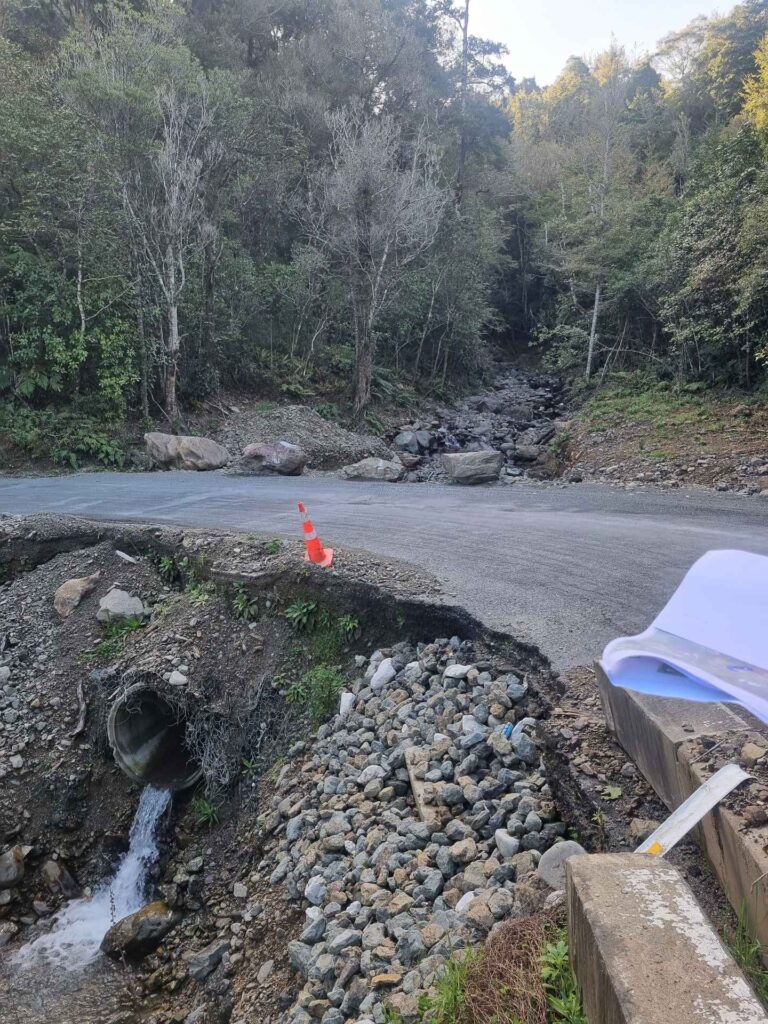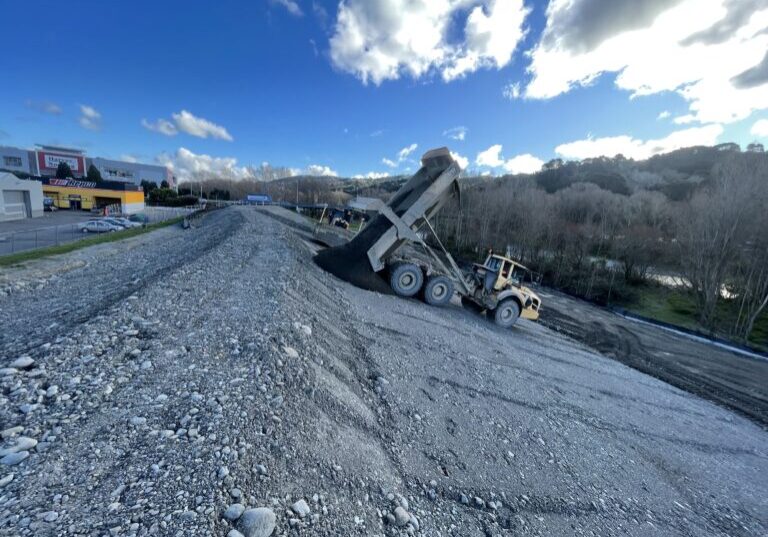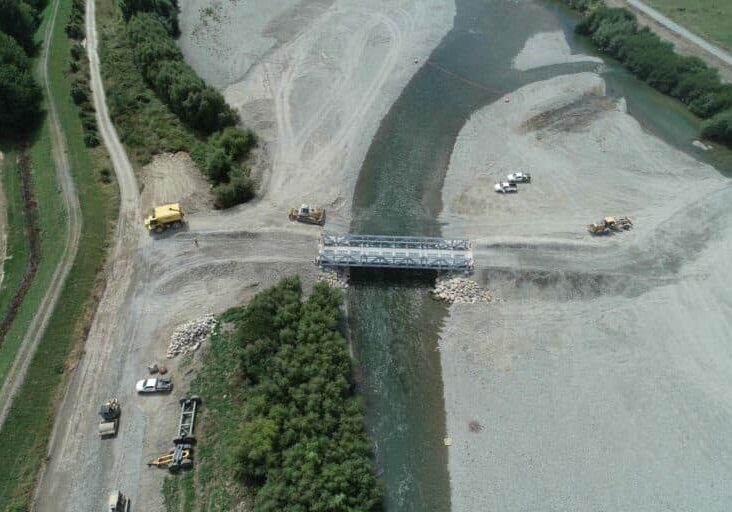Ronga Road Box Culvert

Client: Marlborough Roads Recovery Team (Head Contractor), NZTA (Client)
Collaborator: BECA (Designer)
In July 2021 a storm hit the top of the South Island affecting an existing culvert at Ronga Road. There was a culvert blockage due to an earth slip upstream causing a debris flow downstream and blocking the existing 1200 OD culvert. The resulting overflow of the stream across the roadway caused a road edge under slip and washout which narrowed the roadway and further weakened the road edge upstream and downstream of the culvert.
The project was to improve the capacity of the culvert and re-instate the road and involved the construction of a new 19m long, 3m x 3m box culvert (to replace an existing 1200 OD culvert), providing an earthworks road retreat, construction of a 35m MSE retaining wall and remediation of the roadway. This one-off design and build project required working closely with the engineer to a successful conclusion given the complexity of the location, weak soils, and community lifeline that the road provided.
The culvert works included installation of the culvert that was prefabricated and supplied in section. The associated works included head and wing walls, and in-situ floor apron and water stop, an outlet basin and placement of riprap rock to realign the stream beneath the outlet.
The roadway was then rebuilt by constructing an approximately 4m high MSE wall structure 35m long to stabilise the road edge, so that road way was safe and trafficable again.
Challenges and solutions:
The biggest challenge was ensuring one-lane continuity of traffic throughout the project. This was overcome by running a night shift 6pm to 6am and re-instating the road for traffic to move during the day. At one point the full road width had to be excavated, with the road closed and this was overcome by having back fill available that could be placed at short notice to provide for traffic.
The second challenge was the complexity of the installation of the first sections of the culvert. These were heavy lifts of around 8.6 tonne over a 9m radius and while working within the limits of the equipment, required detailed equipment specification, lift plans, crew briefings, and supervision. Lifting equipment was purpose built and pre-tested off site to ensure the lifts were feasible. The deep gully and poor GPS coverage required extra diligence in positioning confirmation starting with layout using our in-house survey team and followed through using total station by the onsite team.
The project had to provide for water flow should a storm event occur, an interim by-pass culvert was placed and maintained for most of the project and once removed stream flows were provided for by way of a surge basin and overflow pumping. The weather was closely monitored on a day-to-day basis with the site being readied for any rain event within the forecast.
Row one: Before work began (left and middle). Site with Total Station in place (right)
Row two: Placement of the box culvert using the spreader beam
Row three: The Taylors workshop engineered this spreader beam for lifting as a crane could not be used (left). Hydroseeding of the excavated batter (right)
Row four: After the work was completed















